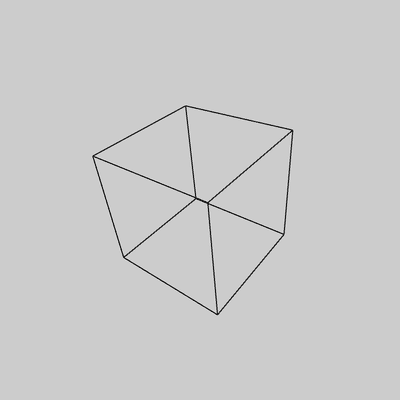Reference+
Name
camera()
Description
Sets the position of the camera through setting the eye position, the center of the scene, and which axis is facing upward. Moving the eye position and the direction it is pointing (the center of the scene) allows the images to be seen from different angles. The version without any parameters sets the camera to the default position, pointing to the center of the display window with the Y axis as up. The default values are camera(width/2.0, height/2.0, (height/2.0) / tan(PI*30.0 / 180.0), width/2.0, height/2.0, 0, 0, 1, 0). This function is similar to gluLookAt() in OpenGL, but it first clears the current camera settings.
Examples
size(400, 400, P3D); noFill(); background(204); camera(70.0, 35.0, 120.0, 50.0, 50.0, 0.0, 0.0, 1.0, 0.0); translate(50, 50, 0); rotateX(-PI/6); rotateY(PI/3); box(45);![Image output for example 1]()
Syntax
camera()camera(eyeX, eyeY, eyeZ, centerX, centerY, centerZ, upX, upY, upZ)
Parameters
eyeX(float)x-coordinate for the eyeeyeY(float)y-coordinate for the eyeeyeZ(float)z-coordinate for the eyecenterX(float)x-coordinate for the center of the scenecenterY(float)y-coordinate for the center of the scenecenterZ(float)z-coordinate for the center of the sceneupX(float)usually 0.0, 1.0, or ‑1.0upY(float)usually 0.0, 1.0, or ‑1.0upZ(float)usually 0.0, 1.0, or ‑1.0
Return
void

This work is licensed under a Creative Commons Attribution-NonCommercial-ShareAlike 4.0 International License.
